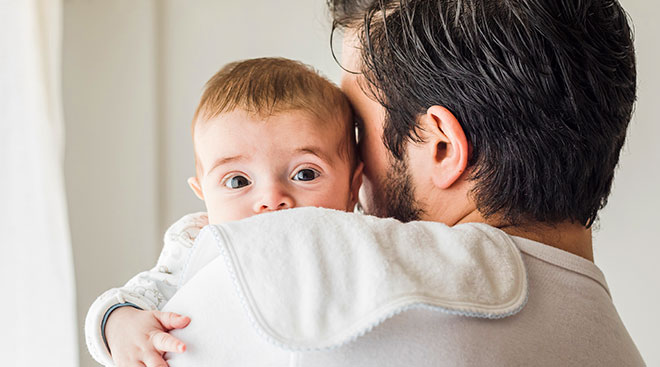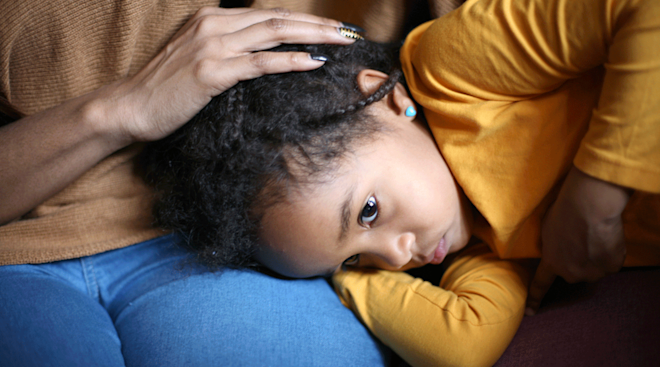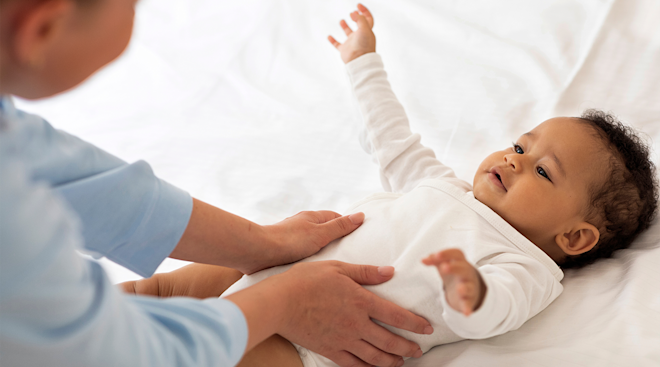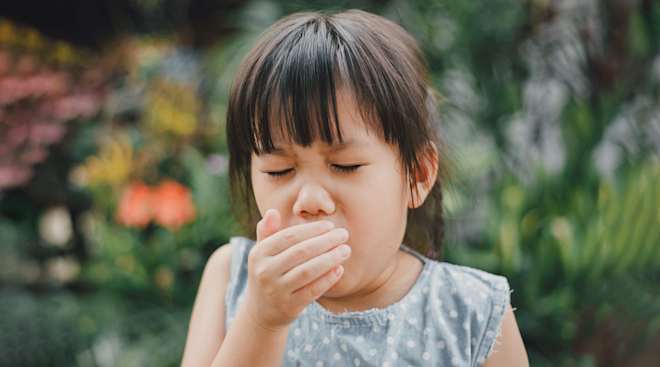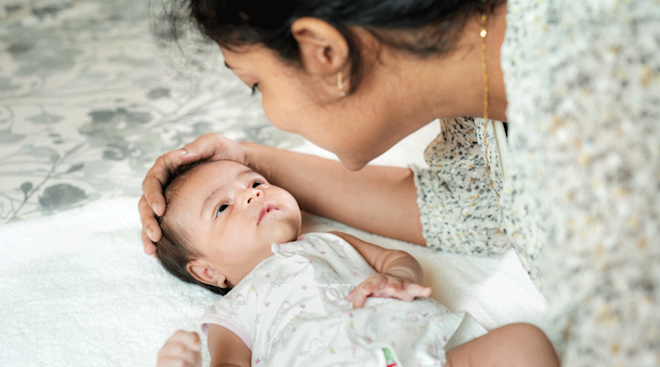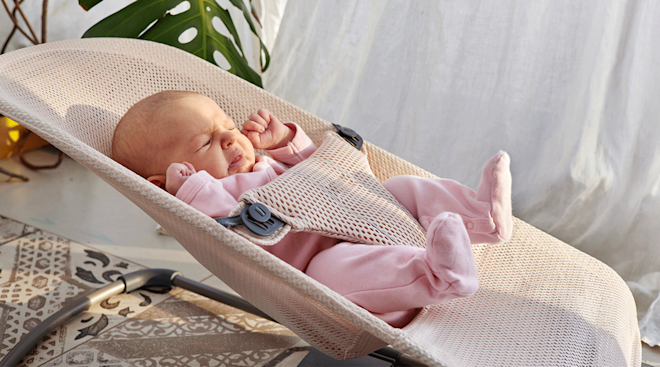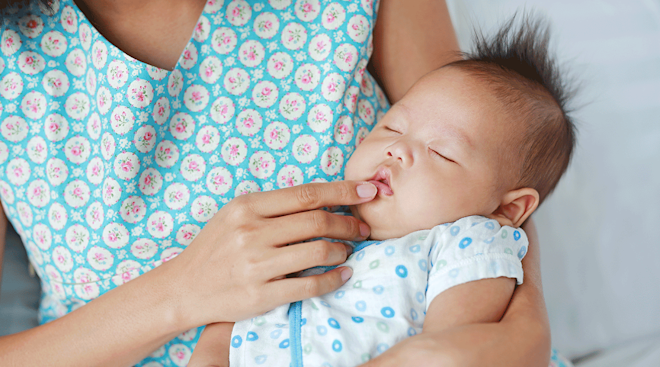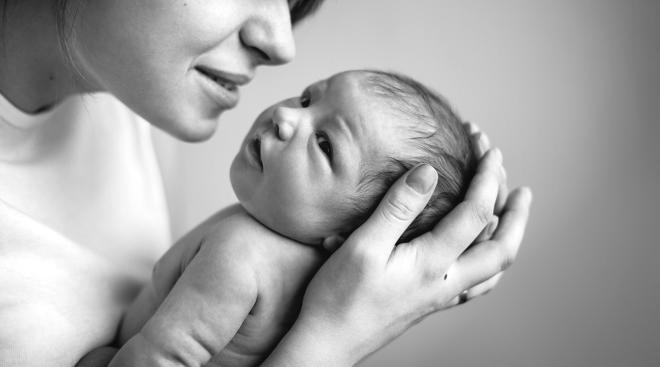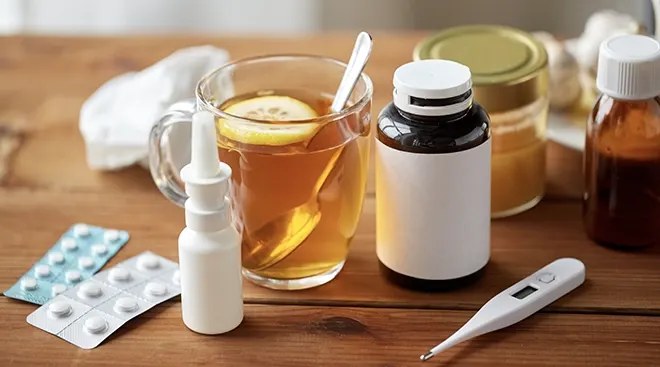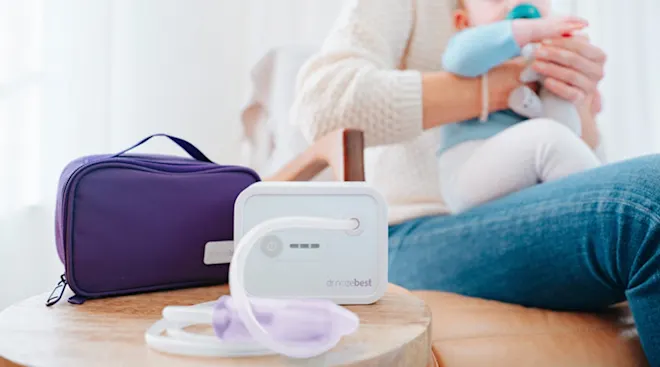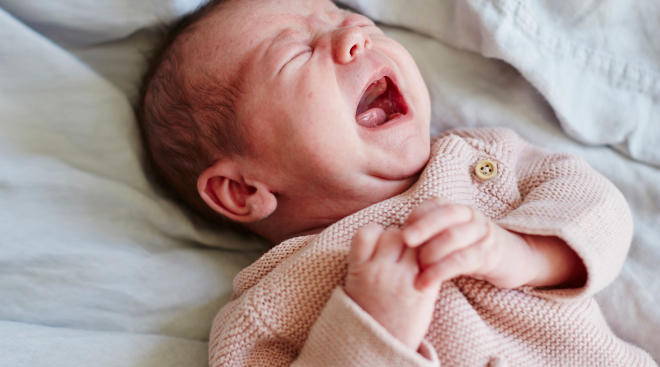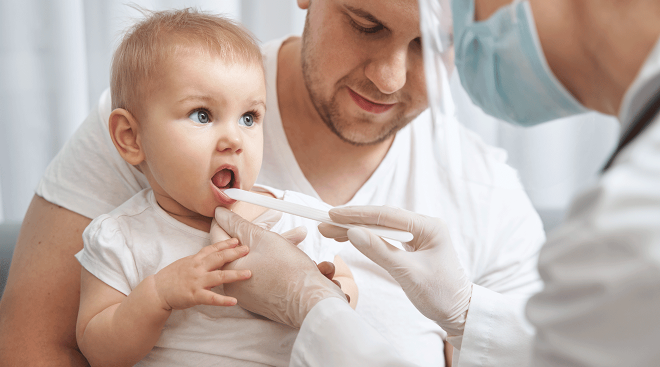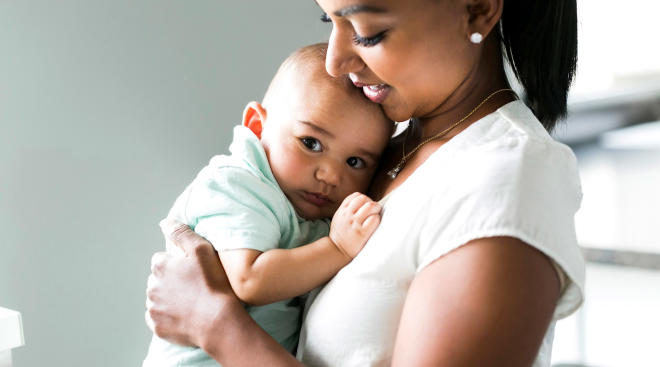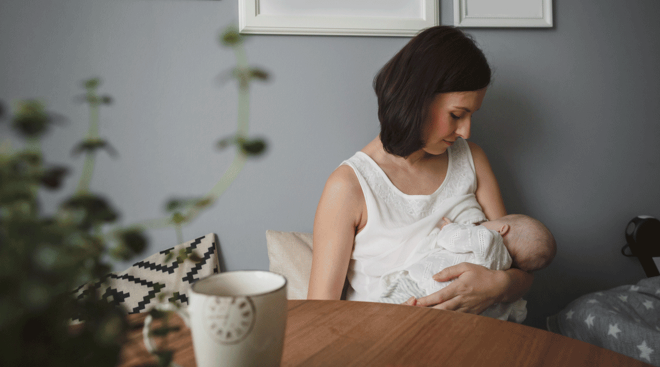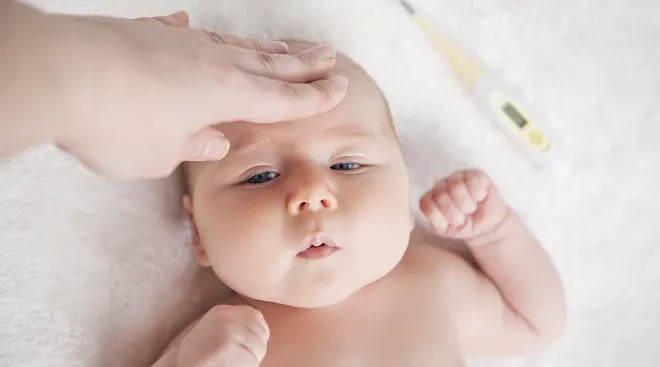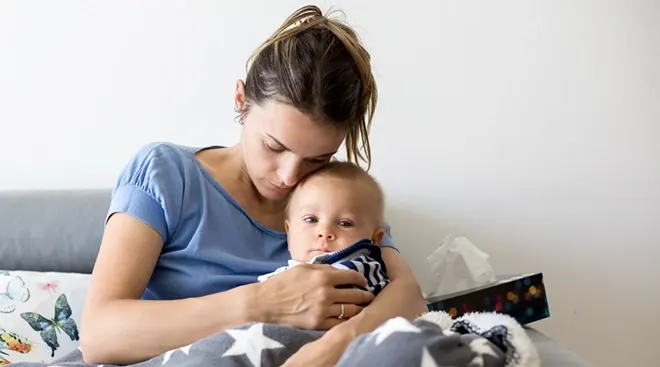How to Detect and Treat Thrush in Babies
Thrush is one of those conditions most adults never hear about until they become a parent—and even then, it may not be on your radar until your pediatrician explains why baby’s mouth is sore and spotted with a thick, white coating. That’s because, while this infection doesn’t typically pop up in adults, it’s relatively common to see thrush in babies. So what is thrush in babies, exactly, and what does it look like? Keep reading for answers on causes, symptoms and treatment, so you can be prepared and help get baby on the fast track to recovery.
Thrush is a fungal infection of the mouth caused by a type of yeast called candida, says Daniel Ganjian, MD, a pediatrician at Providence Saint John’s Health Center in Santa Monica, California.
So, what does thrush look like in babies? It’s characterized by white patches on the tongue, inside of the cheeks, roof of the mouth, gums and lips. Thrush doesn’t commonly appear in healthy adults, but those with weakened immune systems—especially babies younger than 6 months old—are particularly susceptible to the infection. That said, if you’re breastfeeding, baby could potentially pass the infection to you.
While it doesn’t pose any significant danger for little ones, thrush can make sucking and swallowing painful, so it’s important to treat the infection promptly.
Yeast naturally exists on the body and in the mouth, but it can sometimes grow out of control, leading to thrush in babies, says Gina Posner, MD, a pediatrician at MemorialCare Orange Coast Medical Center in Fountain Valley, California. A healthy immune system usually keeps candida in check, but babies don’t have fully developed immune responses, making it more likely for the yeast to proliferate.
Another way a baby may develop newborn thrush is if Mom had a yeast infection in the birth canal at the time she delivered baby vaginally. The baby can pick up the infection while passing through the canal. This is why it’s so common to see thrush in babies under 2 months old.
In other cases, yeast may develop on a nursing mother’s nipples and on bottle nipples or pacifiers that haven’t been thoroughly rinsed. (Remember, fungus thrives in warm, moist areas.) The fungus is then transferred to baby’s mouth and can develop into thrush, says Ashanti Woods, MD, a pediatrician at Baltimore’s Mercy Medical Center.
Yes, newborn thrush can be transmitted from person to person. Someone just holding or playing with a baby who has thrush isn’t going to necessarily develop the infection, but it can be easily passed back and forth between mother and baby during breastfeeding sessions. When baby latches on, candida can travel and infect Mom’s nipples, areolas and/or breasts; similarly, Woods says, if Mom contracts thrush (say, after taking antibiotics, which can kill off the “good” bacteria and pave the way for fungi to grow), she can transmit it to her nursing child.
So how can you tell whether baby has developed a mouth infection? There are several thrush symptoms to look out for, including:
• White, cottage cheese–like patches in the mouth. This thick film usually coats the tongue and inside of the cheeks and is the classic sign of thrush in babies. Note that infants often have a whitish tongue from drinking breast milk or formula, but that white buildup can easily be rubbed off, Woods says, whereas thrush is harder to remove.
• Dry, cracked lips. Cracking and redness at the corners of the mouth is another sign of thrush in babies.
• Fussiness. While some babies are largely unaffected by thrush, others may experience pain while eating and become more fussy than usual, Posner says.
• A diaper rash. Babies can sometimes swallow the fungus and excrete it through bowel movements, which can lead to a yeast diaper rash, Ganjian says. The rash alone isn’t usually a tip-off that you’re dealing with thrush, but if your child has white patches in their mouth and a diaper rash that won’t quit, together they could be telltale thrush symptoms.
• Irritated nipples on Mom. Thrush symptoms in nursing moms can include red, itchy or sore nipples that may be flaky or crusty. If you or baby have contracted thrush, you can continue nursing, but it could be temporarily painful for you until the infection clears.
If you spot any signs of thrush, give your pediatrician a call. Doctors can usually make a diagnosis based on the thrush symptoms baby may be exhibiting; taking a quick peek into your child’s mouth to confirm the presence of white patches is often all they need to do. Other times doctors will take a small sample from baby’s mouth and send it off to a lab for testing.
There are a few ways you can treat thrush in babies. “Some cases of thrush go away on their own with natural and oral care,” Woods says, “but most cases require an oral antifungal medicine.” Doctors generally recommend Nystatin, a medication that’s squirted onto the inside of baby’s cheeks four times a day for a week or two to keep the yeast in check.
To treat a yeast diaper rash that develops as a result of thrush, monitor the diaper area closely and use an over-the-counter diaper rash cream to ease baby’s discomfort, Woods says. If the rash doesn’t clear up, alert your pediatrician.
If you’re breastfeeding, your doctor may also recommend you use an antifungal cream, such as Clotrimazole, on your nipples twice daily to prevent you and baby from exchanging thrush. Always speak with your doctor before using any medication or cream.
Natural remedies for thrush
While medication is generally doctors’ prefered thrush treatment, there are a few natural remedies for thrush in babies and moms that you can try as well:
• Wipe the inside of baby’s cheeks. This can help physically remove the thrush, Woods says.
• Sterilize feeding supplies. Pacifiers, bottles and nipples should all be sterilized after each use until the thrush is resolved, Ganjian says.
•Keep baby’s things clean. Wash any items—such as toys, teethers, bibs and clothing—that come into contact with the fungus.
• Give baby probiotics. Probiotics can help keep a bacterial balance in baby, Posner says, but talk to your pediatrician before offering them to baby.
• Store breast milk properly. If you’re pumping milk, always refrigerate it to prevent yeast from growing.
• Raid your pantry. La Leche League recommends rinsing your nipples with a solution of one tablespoon of apple cider vinegar in one cup of water, or a tablespoon of baking powder in one cup of water. Coconut oil and tea tree oil are also said to be effective natural treatments; just ask your doctor before using.
It’s not always possible to prevent thrush in babies, but there are a few ways to help lower your and baby’s risk:
• Keep your breasts dry. During nursing sessions, breasts are warm and moist—two things yeast thrives on. Ganjian recommends keeping your breasts dry between feedings to help prevent thrush.
• Sterilize bottles and pacifiers. Preemptively sterilizing items that find their way into baby’s mouth will kill off any fungus that could be gathering on those surfaces, Woods says.
Thrush in babies can seem alarming at first, but rest assured, it’s a common and easily treatable condition. Reach out to your doctor at the first signs of thrush—the sooner you get it sorted, the more comfortable you and baby will be!
About the experts:
Daniel S. Ganjian, MD, is a pediatrician at Providence Saint John’s Health Center in Santa Monica, California. He received his medical degree from the University of California, Irvine, in 2004 and is a member of the Alpha Omega Alpha honor society, a designation given to just 10 percent of American physicians.
Gina Posner, MD, is a pediatrician at MemorialCare Orange Coast Medical Center in Fountain Valley, California. She earned her medical degree from New York Medical College and for over 10 years has volunteered with various organizations in the US and Dominican Republic mentoring and educating children and parents on different health topics.
Ashanti Woods, MD, FAAP, is a board-certified pediatrician at Mercy Family Care Physicians in Baltimore, Maryland, and a fellow of the American Academy of Pediatrics. He received his medical degree from Howard University College of Medicine in Washtington DC.
Please note: The Bump and the materials and information it contains are not intended to, and do not constitute, medical or other health advice or diagnosis and should not be used as such. You should always consult with a qualified physician or health professional about your specific circumstances.
Plus, more from The Bump:
Navigate forward to interact with the calendar and select a date. Press the question mark key to get the keyboard shortcuts for changing dates.
































